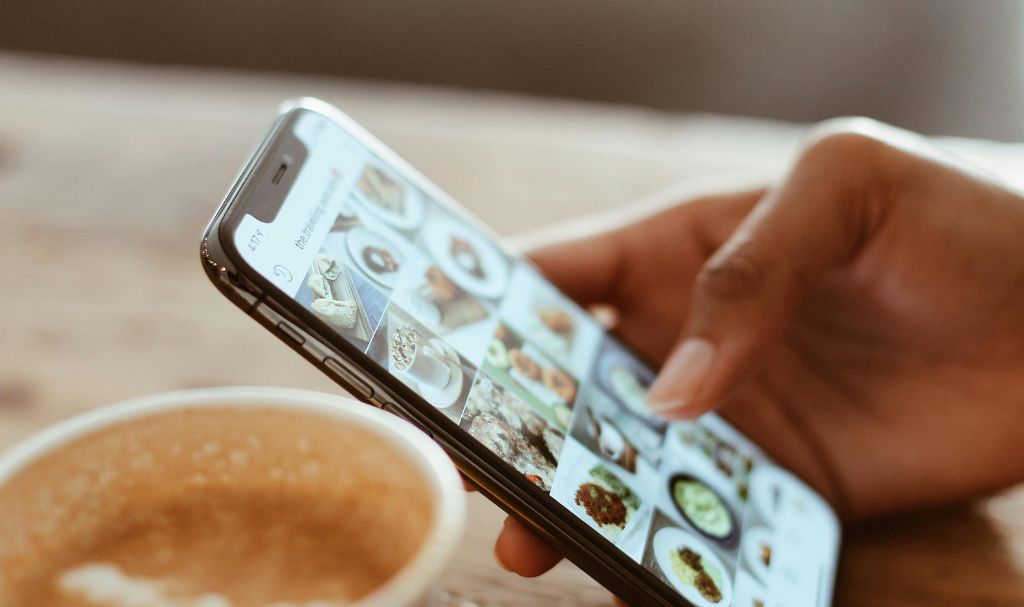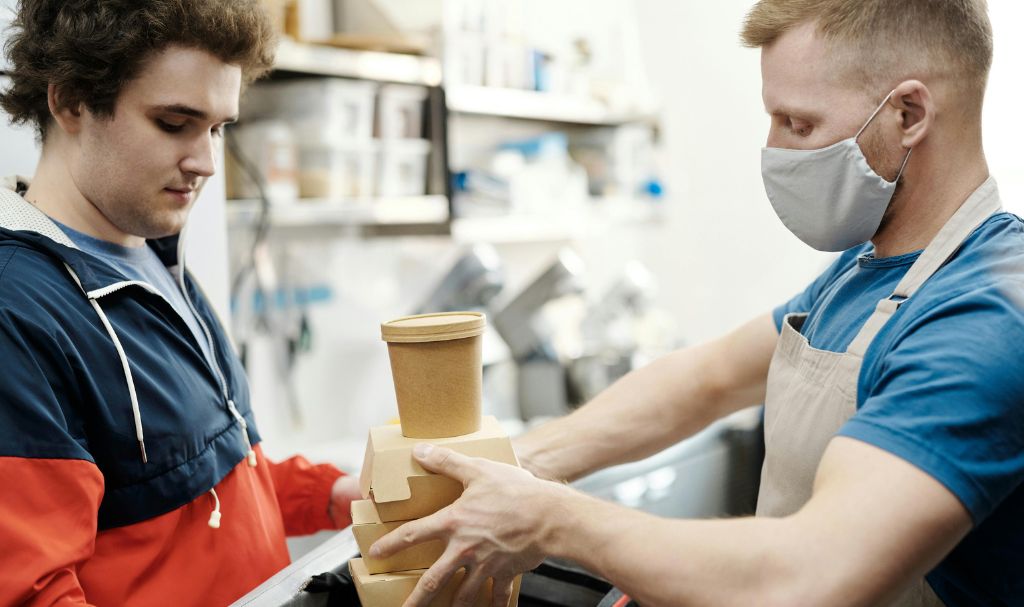Food Delivery App Development: What You Need to Know Before You Start
8 Mins Read
Published on: 30 May 2025
Last Updated on: 05 June 2025

- Food Delivery App Development: Market Overview
- Top Benefits of Food Delivery App Development
- 1. Improved Customer Experience and Retention
- 2. Direct Communication With Your Customers
- 3. Better Control Over Order Management
- 4. Reduced Dependency on Third-Party Aggregators
- 5. More Data for Smarter Business Decisions
- How to Build a Food Delivery App: Step-by-Step Guide
- Step 1: Define the Business Model and Target Audience
- Step 2: Finalize the Core Features You Need
- Step 3: Choose the Right Tech Stack and Platform
- Step 4: Build, Test and Review in Phases
- Step 5: Launch, Monitor and Improve Regularly
- Future Trends in Food Delivery App Development
- • Increased Use of AI for Recommendations and Support
- • Faster Delivery Through Route Optimization
- • Rise of Voice and Wearable Interfaces
- • Focus on Sustainable and Local Deliveries
- • Integration With Health and Nutrition Data
- Final Thoughts
There was a time when dining out or calling a restaurant were the only ways to get food. Today, most people reach for their phones instead. Food delivery has moved from convenience to expectation, especially across urban and semi-urban regions. As this market expands, businesses are looking at food delivery app development not simply as an option but as a necessary growth strategy.
You may already run a restaurant or cloud kitchen. Or perhaps you operate a chain or want to launch a multi-vendor platform. Regardless of your position, one thing is clear. To remain competitive, you need a digital solution that works in real time and adapts to user demand. A functional and well-designed food delivery app does more than take orders. It supports your logistics, keeps your customers informed and allows for better decision-making.
This guide will help you understand how delivery app development works, what benefits to expect and what steps to follow before starting. If you are thinking about hiring a food delivery app developer or planning customized food delivery app development, the insights below will help you build with purpose and avoid wasted resources.
Food Delivery App Development: Market Overview

The demand for food delivery has expanded far beyond convenience. It now reflects consumer habits and digital expectations. From single-location restaurants to enterprise-level aggregators, businesses are shifting toward food delivery app development to stay relevant and profitable. Understanding how this market is growing helps you see where the real opportunities lie.
Recent industry reports show that the global food delivery market reached a value of USD 215.47 billion in 2023. According to SkyQuest, this figure is projected to grow to USD 512.24 billion by 2032. This growth reflects a compound annual rate of 10.5 percent, signaling a strong upward trend in the demand for direct digital food ordering platforms.
In the United States alone, the delivery app development sector is projected to reach USD 1.22 trillion in revenue by the end of 2024. Reports indicate the annual growth rate will continue at over 8 percent, with total volume expected to hit USD 466.47 billion by 2026. These figures show that consumer preference is shifting toward brands that offer reliable mobile access.
India’s food delivery industry also continues to expand rapidly. Leading providers like Swiggy now operate in over 580 cities, offering services that include food and quick commerce. Their growth illustrates how customized food delivery app development supports not only orders but broader customer demands across regions.
In China, market share is dominated by platforms like Meituan, which holds over 65 percent of the food delivery space. As of recent data, nearly 500 million Chinese users placed orders through mobile apps. Market transaction value in China is projected to surpass USD 129 billion, rising nearly 15 percent from the previous year.
These market figures confirm what many businesses already understand. Consumers now expect fast, mobile-first service. The time to invest in food delivery app development is not next year or next quarter. It is now. Companies that act today gain the advantage of stronger data, closer customer relationships and better brand control.
Top Benefits of Food Delivery App Development
Launching a food delivery app is not only just about trend-following. It is about improving service, customer loyalty and long-term profit. Here are five specific benefits that show why building your own platform makes sense.
1. Improved Customer Experience and Retention
A well-built app helps customers place orders quickly and track delivery in real time. This reduces uncertainty and increases satisfaction. When users know how long their meal will take and can make changes easily, they trust your service. This trust turns into repeat business. If your app loads fast and works consistently, you get more return customers without depending on promotions or discounts.
An app also allows users to save preferences and view order history. These features streamline the process and cut down on effort. In a market where time and convenience matter most, giving users better control is key to keeping them engaged. Good experience leads to better reviews and more referrals.
2. Direct Communication With Your Customers
A food delivery app gives your business a direct line to your customers. Push notifications, in-app messages and delivery status updates remove the need for third-party channels. This allows you to update users instantly about offers or delays. You build a more personal connection without depending on social media or email campaigns.
Direct messaging also improves crisis management. If an item is unavailable or a delay occurs, the app lets you respond immediately. Customers value quick communication. The ability to inform without creating friction improves trust and retention. Over time, this connection builds stronger brand loyalty.
3. Better Control Over Order Management
Using a delivery app lets you manage orders with greater accuracy. You see incoming requests, prepare timelines and monitor completion from a single dashboard. Staff receive clear instructions and status updates. This reduces confusion in the kitchen and minimizes delivery mistakes.
Real-time tracking helps manage peak hours more effectively. If orders spike, the app allows you to update wait times or limit options. Instead of overpromising and disappointing customers, you manage expectations through data. A reliable food delivery app developer will build these features based on how your operations flow.
4. Reduced Dependency on Third-Party Aggregators
Partnering with popular food platforms can offer exposure, but it comes at a cost. High commissions and limited control over data hurt long-term business health. With your own app, you avoid these fees and gain more insight into user behavior.
Developing your own system puts brand control back in your hands. You decide the interface, payment methods and terms. A customized food delivery app development project gives you flexibility that third-party platforms cannot offer. Over time, this improves both profit and customer trust.
5. More Data for Smarter Business Decisions
A delivery app collects valuable data about orders, timing, customer locations and buying patterns. You learn what people prefer, when they order and how much they spend. This helps you improve menu design, pricing and staff scheduling without guessing.
Data tracking also improves marketing. You send targeted offers to users based on their actual habits. Instead of blanket promotions, you push relevant deals. A reliable app turns everyday transactions into long-term insights. This is why many successful restaurants now view apps as more than service tools. They see them as planning and growth platforms.
How to Build a Food Delivery App: Step-by-Step Guide
Launching a delivery platform is not only about hiring developers or copying what competitors do. To succeed, you need clear planning, focused execution and the right team.
This step-by-step breakdown will help you understand how food delivery app development really works. You can follow each stage and adapt it based on your goals and market.
Step 1: Define the Business Model and Target Audience
Before writing code, define how your app will operate and who it will serve. Decide whether you are building for a single restaurant, a chain or a multi-vendor setup. Each structure needs different workflows, features and pricing models.
You must also know your user base. Will you target local college students or office workers in a busy city center? This affects design, payment methods and delivery zones. A customized food delivery app development approach ensures your product fits these conditions from day one.
Step 2: Finalize the Core Features You Need
Avoid trying to launch with every possible function. Focus instead on features that match your operation. These often include sign-up, restaurant menu browsing, cart, order tracking, ratings and in-app support.
You also need a driver interface with tools for accepting orders and viewing delivery details. On the admin side, you need dashboards for managing users, menu items and payment reconciliation. A skilled food delivery app developer will help balance the core features against time and budget limits.
Step 3: Choose the Right Tech Stack and Platform
Will your app run on Android, iOS or both? Will you offer a web interface? These choices affect cost and development time. You also need to select the programming language, backend tools and third-party APIs.
This is where hiring the right food delivery app development team matters. The tech stack must allow scalability and smooth performance. If your user base grows fast, your app should remain stable. The wrong stack causes crashes or delays that lead to user loss.
Step 4: Build, Test and Review in Phases
Once planning is done, developers begin the actual build. You must review work in phases. First comes the wireframe. Then developers move to clickable mockups and a working prototype.
Each section of the app should be tested for speed, layout and user flow. Bugs will appear during early tests, but these are expected. What matters is how quickly the team can fix them. This is why it helps to work with a food delivery app developer who understands real-world user behavior.
Step 5: Launch, Monitor and Improve Regularly
After testing is complete and content is loaded, you prepare for launch. This means submitting your app to platforms and running marketing campaigns. But the real work begins after launch.
You must monitor performance, load times and user reviews. Most important features are improved after hearing from real customers. Schedule regular updates based on feedback. This keeps your app from becoming outdated. A strong delivery app development partner helps manage updates and ensures the product continues to perform.
Future Trends in Food Delivery App Development
As user expectations shift and technology evolves, food delivery is becoming smarter and more personalized. If you are planning food delivery app development, you must be aware of where the market is heading. These trends help you build an app that stays relevant instead of becoming outdated shortly after launch.
• Increased Use of AI for Recommendations and Support
Food delivery platforms are using artificial intelligence to suggest meals based on past orders. These systems also power chat support for faster issue resolution. As AI and Generative AI tools improve, apps will become more responsive and tailored to individual users. Smart menus and predictive ordering are just the start of what AI can bring.
• Faster Delivery Through Route Optimization
Speed matters in food delivery. Developers are integrating route optimization tools that use real-time traffic data. These systems help drivers avoid delays and reduce delivery time. As cities grow more congested, this feature becomes essential for service quality and customer satisfaction.
• Rise of Voice and Wearable Interfaces
Ordering food is becoming easier through voice assistants and smartwatches. Many users now expect to place orders without touching their phones. Adding voice and wearable support gives your app broader reach and helps serve customers in new ways.
• Focus on Sustainable and Local Deliveries
Customers increasingly value eco-friendly options and local food sources. Apps that highlight sustainable packaging or partner with nearby farms gain stronger appeal. Building features that support local delivery zones and eco-labeling aligns with growing buyer values.
• Integration With Health and Nutrition Data
More users are choosing meals based on health goals or diet plans. Some apps now let users track calorie intake or avoid allergens. Connecting menus with fitness apps or offering custom filters will soon become standard, not extra.
These trends do not just shape design, in fact, they guide what users expect. A forward-thinking food delivery app developer can help you apply these ideas at the right scale. If you want your platform to grow instead of just launch, keeping up with these trends is critical.
Final Thoughts
Building a food delivery platform is not about chasing trends. It is about providing better service and increasing control over your business. From smoother order tracking to direct customer engagement, the benefits of having your own app are clear. When done right, food delivery app development leads to better margins and stronger customer retention.
If you are looking to build a solution that fits your brand and adapts to growth, connect with a team that has deep experience with customized food delivery app development and supports clients from concept to launch.



















Comments Are Closed For This Article